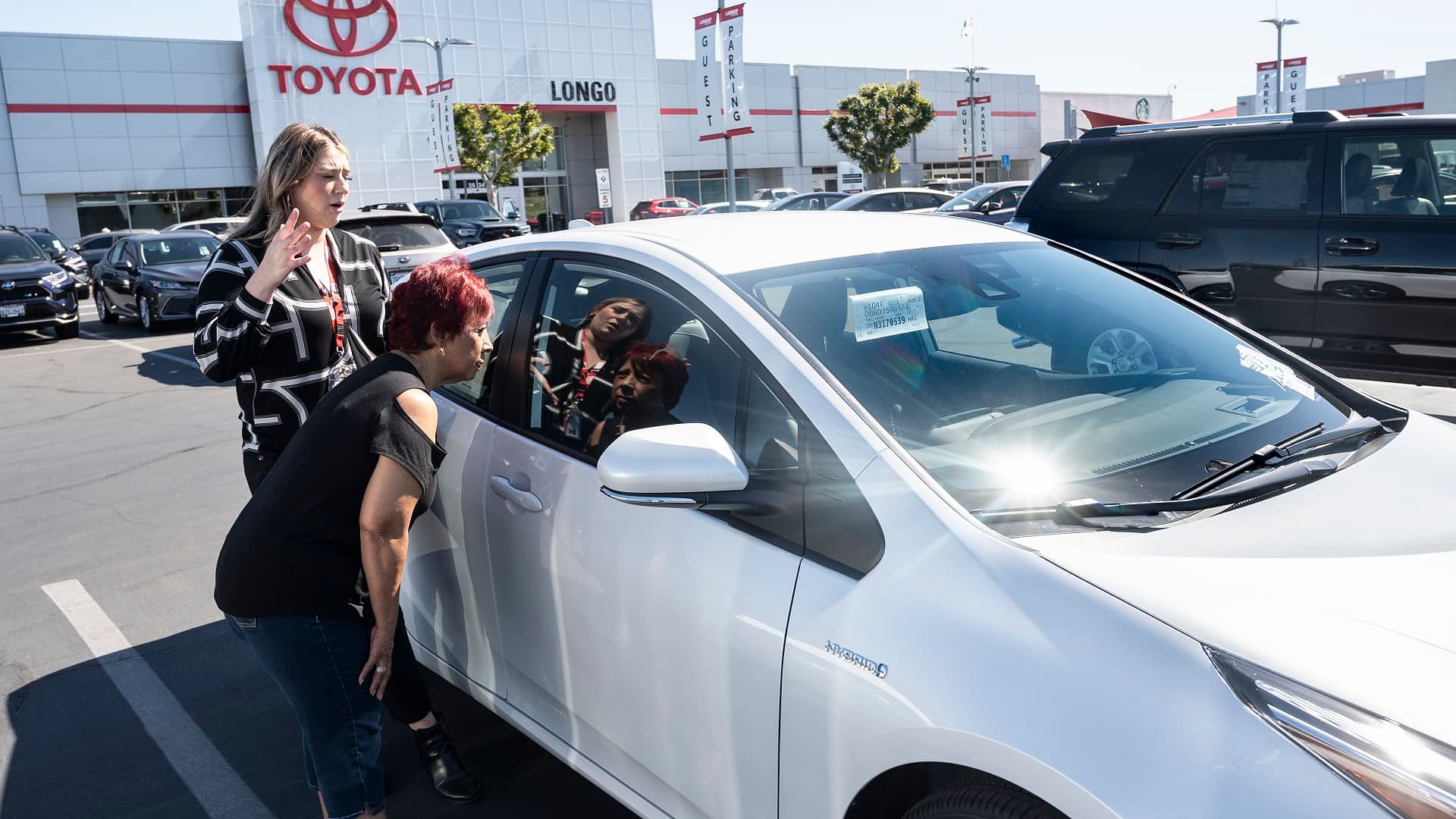How Do People Afford To Live In A Van? A Guide To Budget-friendly Van Life
Van life offers a unique and rewarding way to experience the world, but it’s not without its challenges. Understanding the costs involved, developing effective budgeting strategies, and exploring creative ways to fund your adventures are crucial to making van life a sustainable reality. This article will explore how do people afford to live this nomadic lifestyle and provide practical tips for making it work.
Understanding the Costs of Van Life
Initial Investment
Transitioning to van life requires a significant initial investment. The average cost of a used van suitable for conversion ranges from $10,000 to $40,000, depending on the make, model, and condition. On top of that, the cost of converting the van into a livable space can add another $5,000 to $30,000, depending on the level of customization and the use of DIY or professional installation. Essential van accessories and equipment, such as a bed, kitchen setup, and solar panels, can further increase the initial outlay.
While buying a van may be the more common approach, there’s also the option of renting. Renting a van can be a viable choice for those who want to test out the van life lifestyle without the long-term commitment or large upfront costs. Rental prices can vary, but they typically range from $50 to $200 per day, depending on the size and amenities of the van.
When considering the initial investment, it’s important to weigh the pros and cons of buying versus renting. Buying a van can provide more long-term stability and the ability to customize it to your liking, but it also requires a higher upfront cost and a longer-term financial commitment. Renting, on the other hand, offers more flexibility and a lower initial investment, but you won’t have the same level of control over the van’s features and may be limited in your ability to modify it.
Ongoing Expenses
Once you’ve made the initial investment, the ongoing costs of van life include:
- Fuel costs, which can vary greatly depending on the van’s fuel efficiency and the amount of driving
- Maintenance and repairs, such as regular servicing, tire changes, and unexpected breakdowns
- Insurance, which may be more affordable than traditional car insurance but still a necessary expense
- Camping fees, which can range from free campsites on public land to paid private campgrounds
- Groceries and utilities (electricity, water, propane) for your mobile home
Fuel costs can be one of the more significant ongoing expenses for van lifers. Factors like the van’s make, model, and engine size, as well as driving habits and terrain, can all impact fuel consumption. To optimize fuel efficiency, consider choosing a van with good gas mileage, planning your routes carefully, and embracing a more mindful driving style.
Unexpected Costs
As with any lifestyle, van life can also involve unexpected expenses. These may include emergency repairs, medical issues while on the road, or unforeseen travel delays due to weather or other factors. It’s essential to build an emergency fund to cushion against these unplanned costs. A good rule of thumb is to set aside 10-20% of your monthly budget for unexpected expenses.
How Do People Afford to Live the Van Life?
Tracking Expenses
Keeping a close eye on your expenses is crucial for successful van life budgeting. Use budgeting apps or create a spreadsheet to categorize your spending, from fuel and groceries to maintenance and entertainment. Regularly review your budget to identify areas where you can cut back or optimize your spending.
Apps like Mint, YNAB (You Need a Budget), and Everydollar can be particularly helpful for tracking expenses on the go. These tools allow you to easily categorize and monitor your spending, providing valuable insights to help you make informed financial decisions.
Prioritizing Needs vs- Wants
In the van life world, it’s essential to distinguish between essential needs and non-essential wants. Focus on allocating your budget towards necessities like food, fuel, and van maintenance, and be mindful of discretionary spending on upgrades or luxury items.
When it comes to needs, think about the basic requirements for comfortable and safe van living, such as a reliable sleeping setup, a functional cooking area, and essential utilities. Wants, on the other hand, might include things like high-end electronics, fancy decor, or unnecessary modifications.
By prioritizing your needs and carefully considering your wants, you can ensure that your budget is aligned with your core values and lifestyle goals.
Finding Creative Ways to Save Money
Embrace strategies to reduce your costs while living in a van, such as:
- Cooking meals in the van to avoid expensive dining out
- Utilizing free camping options, like Bureau of Land Management (BLM) land or national forests
- Taking advantage of discounts and promotions, such as campground memberships or fuel rewards programs
- Seeking out free or low-cost recreational activities, like hiking, exploring nature, or attending community events
Meal prepping and cooking in your van can be a game-changer when it comes to saving money. Invest in a portable camp stove, a small refrigerator, and basic cooking supplies to whip up delicious and cost-effective meals on the road.
Additionally, look for free or low-cost camping options, such as BLM land, national forests, or even Walmart parking lots (with permission). These alternatives can help you avoid the higher fees associated with private campgrounds.

Funding Van Life
Traditional Employment
While the van life lifestyle often conjures images of complete freedom, many van lifers maintain some form of traditional employment. This can include remote work opportunities, part-time jobs, or seasonal positions that allow for flexibility and the ability to earn a steady income.
Remote work has become increasingly prevalent, and it’s an excellent option for van lifers who want to maintain a consistent income stream. Careers in fields like information technology, customer service, writing, or graphic design can be particularly well-suited for remote work.
For those who prefer a more hands-on approach, part-time or seasonal jobs in industries like outdoor recreation, hospitality, or food service can provide additional income while aligning with the van life ethos.
Alternative Income Streams
In addition to traditional employment, van lifers can explore a variety of alternative income streams to fund their adventures:
- Freelance work in fields like writing, graphic design, or web development
- Online teaching or tutoring
- Selling handmade goods or crafts
- Offering services based on their skills and expertise, such as photography, pet sitting, or light maintenance work
The gig economy has opened up a world of opportunities for van lifers to monetize their skills and interests. Platforms like Upwork, Fiverr, and TaskRabbit make it easier than ever to find freelance work and connect with clients.

Minimalism and Downsizing
Embracing minimalism and downsizing can significantly reduce the costs associated with van life. By selling or donating unnecessary possessions, choosing multi-functional items, and living with less, you can lower your storage needs and overall expenses.
Minimizing your material possessions not only frees up space in your van but also eliminates the need to pay for storage units or other storage solutions. Additionally, by opting for versatile and compact items, you can optimize the limited space in your mobile home, reducing the overall costs of van life.
FAQ
Q: How much money do I need to start van life?
A: The initial investment for van life can vary significantly, but a realistic budget might range from $10,000 to $50,000 or more, depending on the type of van, the level of conversion, and the desired amenities. If you choose to rent a van instead of buying, the initial investment can be significantly lower, with rental costs typically ranging from $50 to $200 per day.
Q: Can I live in a van full-time?
A: Yes, many people live in vans full-time, but it requires careful planning, budgeting, and a commitment to a nomadic lifestyle. Full-time van life allows you to experience the freedom and flexibility of living on the road, but it also presents unique challenges, such as finding reliable sources of income, maintaining a comfortable living space, and navigating the logistics of daily life.
Q: Is van life safe?
A: Van life can be safe, but it’s important to take precautions, such as parking in well-lit areas, securing your van, and being aware of your surroundings. It’s also a good idea to research local laws and regulations regarding overnight parking and camping to ensure that you’re complying with all relevant rules and guidelines.
Q: How do I find places to park my van?
A: There are many options for parking a van, including campgrounds, BLM land, national forests, and even some Walmart parking lots. It’s essential to research local regulations and be respectful of parking restrictions. Apps like FreeRoam, iOverlander, and Campendium can be helpful in identifying free or low-cost camping spots and boondocking locations.
Conclusion
Van life offers a unique and rewarding way to experience the world, but it’s not without its challenges. By understanding the costs involved, developing effective budgeting strategies, and exploring creative ways to fund your adventures, you can make van life a sustainable reality. Remember, the key to successful van life is resourcefulness, adaptability, and a passion for the journey.
Whether you’re considering a full-time transition to van life or simply want to incorporate more van-based adventures into your lifestyle, this guide has provided you with the tools and insights to make informed decisions and achieve your goals. Embrace the freedom and simplicity of van life, and let your journey on the open road be the start of a fulfilling and financially responsible adventure.
MORE FROM pulsefusion.org












